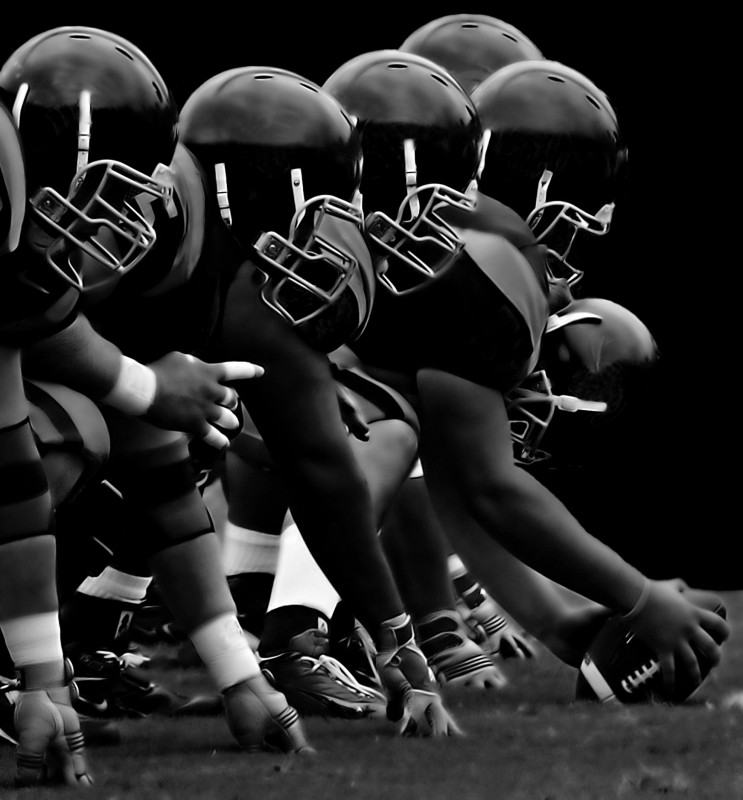
What is a strength coach's job? What are we responsible for? If you asked every strength coach at every school these questions, you would get a million different responses. "To get them stronger, faster and in great shape" used to be the answer. I’m not quite sure how many years ago this answer morphed into all of the different thoughts and ideas of what a strength coach is now.
To be perfectly honest, if I were a newcomer seeing and hearing all the things that go on, I would have a hard time figuring it out myself. In this day and age, strength coaches hit every end of the spectrum. On one side, some of us are the assistant head football coach and take care of just about everything team-related. On the other side, we are viewed as just glorified cheerleaders. Perception is reality, and it is even more relevant in this profession than others. I believe it is this way because, as Mark Watts has said in numerous articles, there is no way to measure what makes a good or bad strength coach. How can we be taken seriously if in our own profession we cannot quantify what we are doing as good or bad, smart or dumb?
I have been doing this a long time. I don’t even come close to knowing it all, and all that proves is that I am smart enough to learn from my mistakes (which I have made a ton), and have great people in and out of my circle that I can rely on for any type of advice or answers to my questions. There were good and bad things about this profession when I started and there are good and bad things about it now. That does not make me “old school” or any of that other crap. I just have seen a lot due to being in this profession for a while.
I have seen all the new things come and go, the old become new, and the shit that really works. To try to survive, I always like to look at what has stood the test of time. What has endured and what has fallen by the wayside? I am constantly asking if there is a better way. I know athletes are different now; there is no denying it. But there were always different athletes. Don’t tell me back in the day every person on every team was super motivated, never missed a workout, and all benched 500 pounds. There were great ones then, and there are great ones now. There were bad ones then, and there are bad ones now. Strength coaches in the past figured out how to improve their teams, and we have to do the same thing now.
I believe with all the information out there we can all make sound decisions in our athletes' training. There are so many ways that we can reach and teach our athletes that it is scary. We definitely have the edge in that department. How easy is it to have someone video an athlete doing a clean on a phone and give them instant feedback? How great is it that we can send them a motivational link in the blink of an eye? We have the technology to make them all better individually, and that also is where some of our problems stem from.
There is no such thing as a “we” phone, or a “we” pad. Almost everything in their lives over the past ten years have been I — iPhone, iPad, everything self-centered. Kids know how to take care of themselves to survive and to get a ton of views, but teamwork to a lot of them is foreign territory. It really isn’t their fault, as they say they are a product of the times. In that mentality, they are so far removed from what something is supposed to be instead of what they want it to be (perception) that they have gone completely astray from the integrity of what they are doing. They don't know the integrity of doing something right and becoming a master of it, instead of doing it because it looks good and will get more views.
Take a player from high school. He is in the weight room, one of his “boys” has the phone out, so he puts on more weight than he can handle, quarter squats down, his spotter has to pull his chest back up so he can stand and rack it, all the players are going wild, and he gets a bunch of hits from the video. No integrity at all. I believe that this is the difference from then and now. The easiest way to combat that is setting the standard! It is the hardest thing to do at the start, but it will make their life and yours a lot easier in the long run.
You have to sit down with your staff and simply write down what you are going to accept and not accept. Convey it to the athletes, and never give in. Ever. There are certain standards that our staff and players hold near and dear to our hearts, and anything else is not allowed. If someone touches you or the bar, the lift doesn’t count. Period. If it says eight reps, it is not five by you and three with a spot. It is eight reps by you. Don’t dip your head running through the line; run through the line.
This is the hard part from the beginning, but the higher the standards, the higher the rewards. If you don’t cheat on them, they will never cheat on you. I cannot tell you how often we are in the middle of a great workout and a “star” player doesn’t touch the line and I say in my head, "Let it go. Kids are working hard." In the game that “star” player runs a five-yard route instead of the six-yard one he was supposed to run, and it causes an interception. So I blow the whistle, say that the rep didn’t count and they have to redo it. Can’t cheat the standard.
I believe setting the standard is motivating in itself, because it demands players make themselves better the right way with integrity, and if you can help them with the little things you are helping everyone. After a while you will see your players start correcting things and calling out bad reps even though it means they have to run or lift another one themselves. We instead of I. Now you really have something. That something is a team, with everyone working toward a common cause of setting the standard. Upholding the standard. Defending the standard to the newcomers.
RECENT: Who Are You — From Assistant to Head Coach
The Roman legions had standards for every division, made of gold and placed on an eight-foot pole. The person who carried it was called the standard bearer. The standard was so important to the Romans that there are stories of the legions going back 100 years later to get a standard from an enemy that took it in battle. Setting the standard can be done, and do not underestimate the athletes of today. They want standards and something they can commit to heart and soul, but they just don’t know how.
For example, the school I work at is a stop for a national band to practice for three days every year. Kids from all over the country get picked to play for this band, and all summer they travel around the United States, stopping and practicing at a different school every three days. There are about 300 kids, three 18-wheelers of equipment, plus three giant RV’s and more. It is like a small army. They sleep on the gym floors of local high schools and cook their own lunches. I just got done with a morning lifting group and I was watching them set up for the day. The band members all went and filled their own water bottles, set up the field, ran the dynamic warm-up (yes, I said dynamic warm-up), and pretty much ran the entire operation themselves in individual groups. They were coaching each other, correcting each other, and basically taking care of business.
It was impressive, especially since they are high school kids doing it all with very minimal instruction from their “coaches.” I then thought about the military, and here are college-age kids jumping out of airplanes, carrying 150-pound packs of lethal ordinance through the 125-degree desert, taking care of themselves and their band of brothers. That is one thing all successful teams businesses and individuals have in common. They are disciplined, work with a purpose, and hold a higher standard than their counterparts. Set the standard. You will be glad you did.
Photo courtesy of Laurin Rinder © 123RF.com












3 Comments